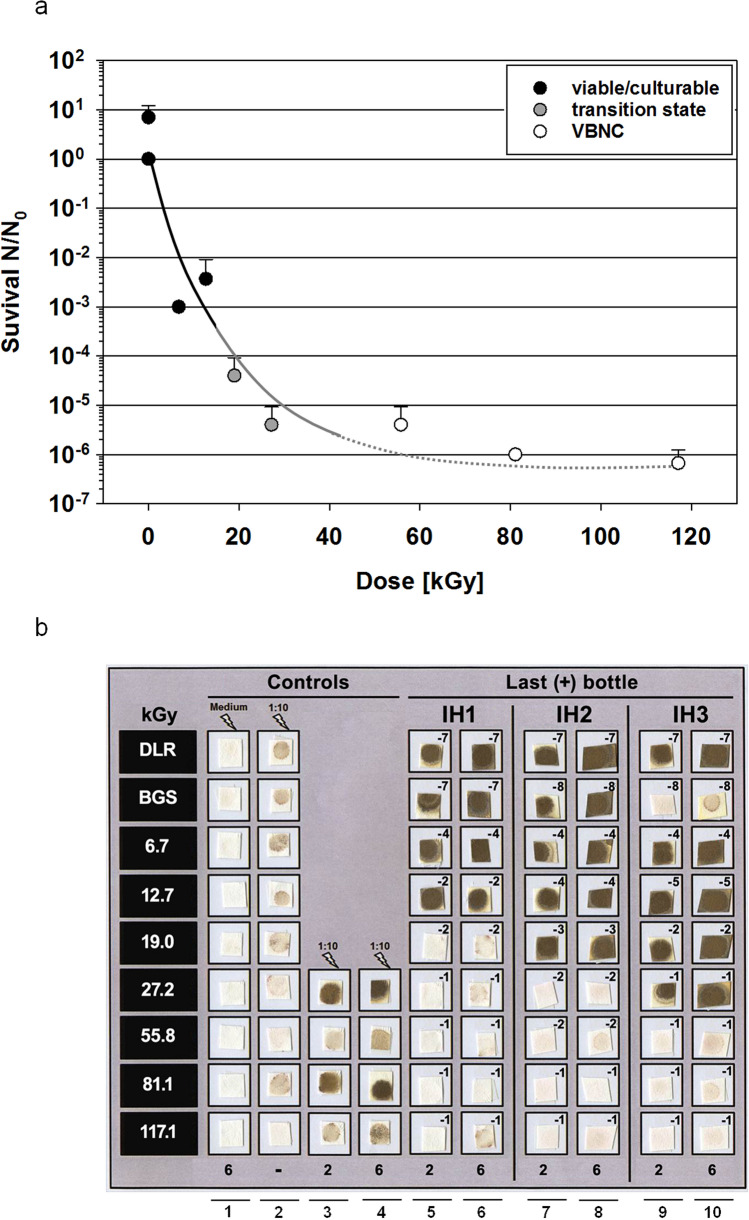Fig. 2.
a Survival of I. hospitalis for reproduction (culturable) and viable but non-culturable (VBNC) state. Black circles: viable and replication-competent, hence culturable. Gray circles: transition state between culturable, and viable but non-culturable (VBNC). Open circle: viable but non-culturable (VBNC). The experiment was conducted with n = 3 and refers to the results on lead acetate paper. Trendlines were fitted by hand. b Controls to discriminate between the culturable and viable but non-culturable state. Metabolic activity of three independently exposed (γ-radiation) I. hospitalis stationary phase cultures (IH1, IH2, and IH3) monitored on lead acetate paper. Exposed ½ SME + S0 medium, and exposed stationary phase cultures (1:10 diluted in fresh medium) were incubated at 90 °C for up to 6 days (columns 1, 3, and 4). Exposed IH1 stationary phase cultures were tenfold diluted in fresh medium before incubation (column 2). For higher sensitivity, 0.2 ml of the last positive IH1 bottle within a serial dilution were transferred into fresh medium, and incubated at 90 °C for up to 6 days (columns 5, 6). The same was conducted with IH2 (columns 7, 8), and IH3 (columns 9, 10). DLR laboratory control, BGS transport control. Serial dilutions with 1:10 dilution steps (10–1–10–8) are represented by the exponent (− 1 to − 8), and 2 and 6 refer to the days of incubation (Koschnitzki 2016)

